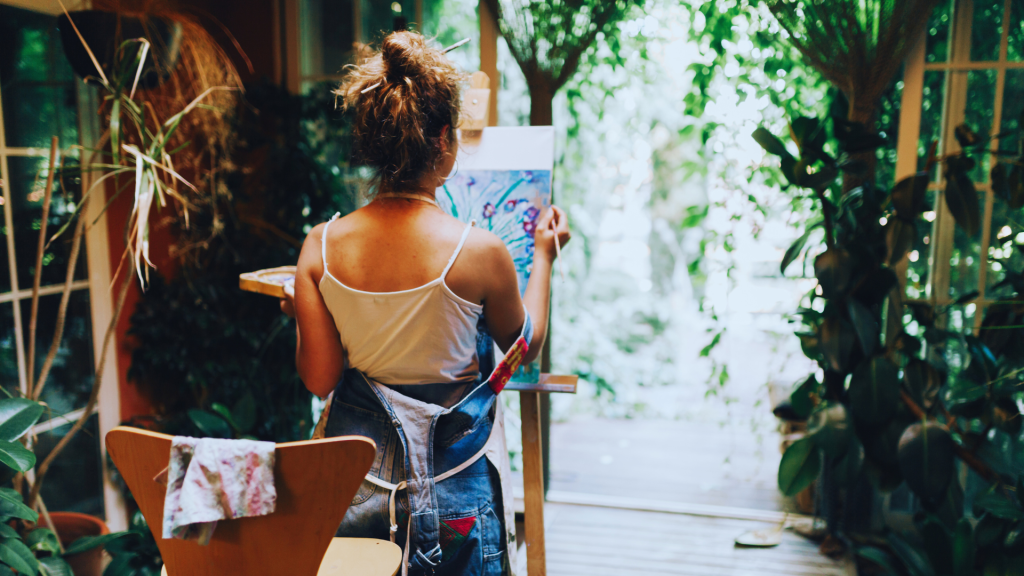Finding a unique artistic style can often feel like a daunting challenge, especially for those just starting their creative journey. The key lies in exploring different mediums, techniques, and subjects until something resonates deeply. This process not only fosters personal growth but also helps artists to distinguish their work in a crowded field.
Many artists start by mimicking others, which is a natural part of development. As they experiment and gain confidence, they begin to uncover their preferences and influences. Authenticity emerges when they embrace their inspirations while integrating their individuality into their creations.
Reflecting on personal experiences, emotions, and values can also guide the path toward a distinct style. By paying attention to what genuinely excites and motivates them, artists can cultivate a signature approach that feels uniquely theirs. Exploring these aspects opens up avenues for genuine expression.
Understanding Artistic Style
Artistic style encompasses the distinctive techniques and choices that define an artist’s work. Recognizing one’s own style is crucial for creative expression. The following sections explore its definition, historical context, and key components.
Defining Artistic Style
Artistic style refers to the unique way an artist expresses ideas and emotions through their work. It includes elements such as color palettes, technique, and subject matter. Style is often a blend of personal preferences and aesthetic choices.
An artist’s style can evolve over time, influenced by experiences, training, and exposure to different art movements. Identifying specific traits in one’s work can help in refining what makes it distinct. For emerging artists, reflecting on their influences can guide them toward developing a unique style.
History of Art Styles
Art styles have evolved considerably throughout history, reflecting cultural shifts and technological advancements. Major movements include Renaissance, Baroque, Impressionism, and Modernism. Each has unique characteristics that distinguish its artists.
Understanding these styles can help artists place their work in a broader context. For example, the Impressionists broke conventions with loose brushwork and light-infused compositions. Recognizing historical influences allows artists to appreciate their craft and establish a connection with past masters.
Components of Style
Several key components contribute to the formation of an artist’s style:
- Color: The choice of color can evoke specific emotions and set a mood.
- Technique: Methods of application—like brush strokes or layering—define visual impact.
- Subject Matter: Themes and imagery can signify personal narratives or cultural commentary.
By analyzing these components, artists can better understand what makes their work distinctive. Engaging in diverse practices and experimenting with various elements fosters growth and clarity in developing a unique style.
Discovering Your Personal Style
Finding a unique artistic style hinges on various factors. Experimentation is crucial, as is the influence of favorite artists. Technical skills, mediums, and personal inspiration will also play significant roles in this journey.
Importance of Experimentation
Experimentation allows artists to explore different techniques and mediums. By trying various methods, an artist can discover what resonates with them. Using a sketchbook is an excellent way to document these explorations.
Artists should not shy away from making mistakes. Instead, they should view these moments as learning opportunities. Combining techniques from different styles can lead to unexpected results and new insights.
Constantly pushing boundaries enriches an artist’s experience. This ongoing process aids in the gradual development of a personal style. Embracing experimentation leads to growth and innovation in one’s artistic voice.
Influence of Favorite Artists
Studying favorite artists can provide valuable insights into personal style development. Observing their techniques, color palettes, and subject choices can inspire new ideas. An artist can adapt elements from these influences to inform their unique approach.
He or she should analyze what specifically draws them to these artists. Is it the use of color? The way they portray emotions? Understanding these preferences helps refine one’s personal aesthetic.
Incorporating admired elements, while adding a personal twist, fosters originality. Favorite artists can guide artists in exploring their own pathways while avoiding mere imitation.
Role of Technique and Mediums
Different techniques and mediums can shape an artist’s work significantly. Whether it’s watercolor, oil, pencil, or digital, each medium offers unique possibilities. Understanding the characteristics of various mediums enhances an artist’s ability to express themselves.
Experimenting with different techniques can reveal an artist’s strengths. For example, one might excel in detailed line work but struggle with abstraction. Recognizing these strengths allows artists to focus their efforts accordingly.
Combining various techniques can lead to innovative outcomes. Artists can blend traditional methods with modern approaches to create something truly personal.
Incorporating Personal Inspiration and Creativity
Personal inspiration plays a vital role in artistic expression. Life experiences, travels, and emotions can serve as significant sources of creativity. An artist should seek to draw from these influences in their work.
Creating from genuine experiences imbues artwork with authenticity. Establishing a connection to the subject matter can resonate deeply with viewers. This connection can help solidify an artist’s unique voice.
Moreover, an artist should also consider utilizing unconventional sources of inspiration. Nature, literature, or even daily observations can spark creativity. Allowing personal narratives to emerge in artwork establishes a stronger individual identity.
Refining Your Artistic Voice
Finding a unique artistic voice requires attention to several key elements that define individuality in art. Developing a signature style and mastering color and composition are essential, along with understanding the importance of constructive criticism. Consistency and perseverance play vital roles in this journey.
Developing a Signature Style
A signature style is what differentiates an artist’s work from others. It embodies personal choices in subject matter, technique, and medium. Artists should explore various styles and techniques to identify what resonates most with them.
They can experiment with different forms of expression, such as abstract, realism, or illustrative styles. Recording their progress through sketchbooks or digital portfolios can help track their evolving preferences. This process aids in recognizing patterns and themes that naturally emerge.
Creating a series of works can further help solidify a signature style. This allows artists to focus, refine, and maintain a cohesive approach. As the body of work grows, so does the artist’s confidence and recognition of their unique perspective.
Mastery of Color and Composition
Color and composition are critical to conveying emotions and messages in art. An artist should study the color wheel to understand color harmony and contrasts. This knowledge helps in creating effective color palettes that evoke specific feelings.
Moreover, mastering composition techniques enhances an artist’s ability to lead the viewer’s eye throughout a piece. Understanding concepts like the rule of thirds, balance, and focal points can significantly improve the effectiveness of visual storytelling.
Artists might benefit from analyzing compositions in established works. Observing how color and layout work together to create impact is essential. Experimenting with various combinations allows artists to discover what best represents their voice.
The Role of Constructive Criticism
Constructive criticism is invaluable to refining artistic voice. Seeking feedback from trusted peers or mentors provides insights that an artist might overlook. It can highlight strengths and areas needing improvement.
Approaching criticism with an open mind fosters growth. Artists should focus on the intent behind the feedback rather than taking it personally. Integrating this feedback can lead to surprising discoveries in their work.
Setting aside time for critiques can create a supportive environment for artists to share ideas. Engaging regularly with a trusted artistic community encourages mutual growth. This collaborative spirit leads to a richer understanding of one’s own artistic capabilities.
Consistency and Perseverance
Consistency in practice is essential for refining one’s artistic voice. Regular creation, exploration, and experimentation help solidify techniques and style. Artists should commit to a routine that allows for both disciplined work and playful exploration.
Perseverance is equally important, as developing a unique artistic style takes time. It’s a journey that includes trial and error, learning from setbacks, and celebrating small successes along the way.
Creating art daily or weekly can cultivate a habit that promotes steady improvement. Encouragement from peers helps maintain motivation during challenging phases. Over time, this consistency leads to a distinct and confident artistic voice.
Engaging with the Art Community
Connecting with the art community is essential for developing a unique artistic style. Through networking, exploring seminal movements, and utilizing digital tools, an artist can enhance their skills and gain inspiration from diverse sources.
Networking and Branding
Building a network within the art community allows artists to share their work while receiving feedback. Participating in local art shows, exhibitions, and workshops can create valuable connections.
Artists should cultivate a personal brand that reflects their style and vision. This includes creating a cohesive portfolio showcasing various works, such as pop art, realism, and abstract art. Leveraging social media platforms helps artists present their brand to a wider audience, engaging with potential collaborators, collectors, and mentors.
Exploring Art Movements
Understanding different art movements enriches an artist’s perspective and informs their unique style. Exploring expressionism, cubism, and surrealism can provide insights into techniques and concepts that resonate with an artist’s vision.
Artists should study the context and impact of these movements on contemporary art. This analysis can inspire new techniques and concepts, leading to innovative designs and expressions in their work. Participating in discussions or attending lectures about these movements can further enhance this exploration.
Utilization of Digital Tools
Digital tools play a significant role in modern art creation and promotion. Artists can use software like Adobe Creative Suite or Procreate to experiment with styles and techniques without the constraints of traditional media.
Social media and websites allow artists to showcase their work to a global audience. Engaging with platforms like Instagram or Behance can help them reach art enthusiasts and collectors. Utilizing these tools not only aids in the promotion of their art but also fosters connection and dialogue within the art community.

